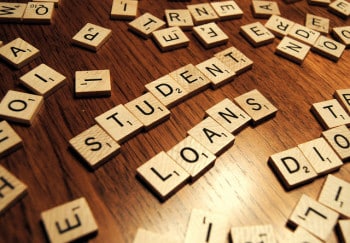
California students have somewhat less debt than the national average – about $21,000 per student. Which California students end up with the most debt?
Demographics With The Most Debt
Nationwide, certain demographics are more likely to have student debt. For example, about ⅓ of African American students have student loan debt, as do 28% of Hispanic students. In contrast, just 19% of Asian students have debt, and just 16% of white students. Perhaps unsurprisingly, the level of student debt drops off steadily as people age. About 40% of students under the age of 29 have student debt, compared to just 30% of those between 30 and 40. About 20% of students between 40 and 50 have debt, as do 12% of those between the ages of 50 and 60.
Interestingly, the amount of school students attend does not significantly affect how many of them have debt. About 25% of students who haven’t completed college have debt, compared with 35% of those who have completed college and 30% of those with a postgraduate degree.
Who Ends Up In Default?
It seems like students who borrow more should have a harder time paying back the debt. However, the opposite is the case. Students with the least amount of debt – $5,000 or less – actually default at a rate of about 35%. Students who borrow $5,000 – $10,000 default about 30% of the time. In contrast, students who borrow more than $100,000 default just 18% of the time.
In part, that’s because students with lower levels of debt tend to be those that drop out without completing a degree. The unemployment rate for college graduates is under 3%, so those students who complete their degrees are likely to be employed and be able to pay off their loans. In addition, those who borrow the most tend to do so to complete an advanced degree, such as medical or law school, and become high earners.
Unfortunately, only ⅓ of college students in California complete their degree. The remainder end up stuck with student debt but without the higher earnings and wider employment opportunities afforded by a college degree.
How To Keep Student Debt Under Control
So, how can you avoid getting stuck with student loan debt that you can’t pay? First, you should try to borrow as little as possible. Take advantage of in-state tuition and all possible scholarships to keep your bill as low as you can. There are thousands of scholarships available online. Some are for students from particular communities or students who want to work in a particular area. There are even scholarships for students with red hair!
You may be able to take some of your core classes at a local community college for credit; that can save you a couple of semesters’ worth of tuition at a university. You’ll need to ensure that you can get credit for those classes. Try to finish within 4 years; every extra semester adds to your bill and decreases your likelihood of finishing.
Before you even start the process of choosing a school, consider your end goals. What do you want to do for a living? Tailor the amount you borrow to the amount you expect to earn. For example, the starting salary for an software engineer is around $75,000 but the starting salary for a teacher is less than $40,000. If you’re studying to get a higher-earning job, you may be able to handle a higher load of debt. If you’re studying for jobs that are low-paying or particularly difficult to get, you may want to borrow less.
When you start school, look into work study programs. These programs will allow you to work for the school, usually in the library or cafeteria, for a few hours a week in return for decreased tuition. You may also be able to work as a Resident Assistant in the dorms, which can get you free housing. You may be able to hold to hold a job outside school in order to defray some of your expenses, but it can be harder to balance your time between an outside job and your studies.
Once you graduate, take advantage of the available student loan repayment programs. There are programs that allow you to tailor your payments based on your income and programs that will forgive some of your loans if you work in certain industries for a certain number of years after graduation. The paperwork can be a pain, but it’s worth it to keep your payments manageable and avoid defaulting on your student loans.
Struggling With Your Loans?
Sometimes, student loan debt gets out of control. When that happens, you still have options. You may be able to rehabilitate your student loans, for example. You may also be able to enter one of the repayment programs or switch to a program that better fits your needs.
If you’re struggling with your student loans, we may be able to help. Contact us today for a free consultation to learn about your options for reorganizing and dealing with your debt.
Image Credit and License
